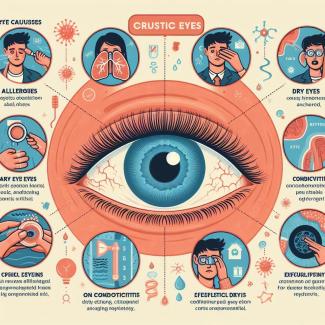
Cortisol is a steroid hormone produced by the adrenal glands, which are located on top of each kidney. It plays a crucial role in the body’s response to stress, regulating metabolism, and maintaining various physiological functions such as immune response, blood pressure, and the body's sleep-wake cycle. Given its vital functions, testing cortisol levels is important when there is suspicion of adrenal dysfunction, stress disorders, or diseases like Addison's disease and Cushing's syndrome. This comprehensive guide will dive deeply into various aspects of cortisol testing, from recognizing symptoms of low cortisol to performing home tests, interpreting results, and treating low cortisol levels.
Symptoms of Low Cortisol
Low cortisol, also known as adrenal insufficiency or hypoadrenalism, can lead to a range of symptoms. These symptoms vary depending on the severity of the cortisol deficiency and the underlying cause. Recognizing these symptoms is the first step in considering whether a cortisol test is necessary. Some of the most common symptoms of low cortisol include:
- Fatigue and Weakness: One of the hallmark symptoms of low cortisol is extreme fatigue and muscle weakness. Cortisol is responsible for maintaining energy balance, so when levels are low, energy production and regulation can be impaired.
- Weight Loss: Unexplained weight loss can occur with low cortisol levels. This is because cortisol plays a role in regulating appetite and metabolism.
- Low Blood Pressure: Individuals with low cortisol may experience a drop in blood pressure, leading to dizziness or lightheadedness, especially when standing up too quickly (postural hypotension).
- Muscle and Joint Pain: Low cortisol can cause muscle and joint aches, as cortisol has anti-inflammatory properties that help reduce pain.
- Hypoglycemia (Low Blood Sugar): Cortisol helps regulate blood sugar levels by stimulating gluconeogenesis in the liver. Without sufficient cortisol, blood sugar levels may drop, causing symptoms like shakiness, confusion, sweating, and fainting.
- Mood Changes: Low cortisol can affect mental health, leading to feelings of depression, irritability, or apathy. Anxiety can also occur in individuals with cortisol insufficiency.
- Darkened Skin (Hyperpigmentation): Some individuals with adrenal insufficiency develop areas of darker skin, particularly on scars, skin folds, and areas exposed to the sun. This occurs because low cortisol leads to an overproduction of ACTH (Adrenocorticotropic Hormone), which stimulates melanin production.
- Digestive Issues: Nausea, vomiting, diarrhea, and abdominal pain are common gastrointestinal symptoms associated with low cortisol levels. Cortisol helps regulate many functions of the digestive system, so insufficient levels can disrupt digestion.
- Salt Cravings: Cortisol plays a role in the balance of sodium and potassium in the body. Low cortisol can lead to an imbalance, causing individuals to crave salty foods.
- Reduced Ability to Handle Stress: Cortisol is known as the "stress hormone" for a reason—it helps the body respond to and recover from stressful situations. Without sufficient cortisol, even minor stressors can cause overwhelming fatigue, mental fog, and a sense of being unwell.
What Does Low Cortisol Mean, and Is It Dangerous for Health?
Low cortisol can signify several underlying health conditions, including adrenal insufficiency, which can be life-threatening if left untreated. Understanding the causes and dangers of low cortisol is crucial for proper diagnosis and treatment.
- Primary Adrenal Insufficiency (Addison’s Disease): This condition occurs when the adrenal glands are damaged and fail to produce adequate cortisol. Causes of Addison's disease include autoimmune diseases, infections (like tuberculosis), and cancers affecting the adrenal glands. Addison’s disease is rare but serious, and it can lead to an Addisonian crisis if cortisol levels drop too low, requiring immediate medical intervention. Symptoms of an Addisonian crisis include severe abdominal pain, confusion, and fainting due to critically low blood pressure.
- Secondary Adrenal Insufficiency: This occurs when the pituitary gland fails to produce sufficient ACTH (adrenocorticotropic hormone), which stimulates the adrenal glands to produce cortisol. Secondary adrenal insufficiency is more common than primary adrenal insufficiency and can result from long-term use of corticosteroids, tumors in the pituitary gland, or brain injuries.
- Tertiary Adrenal Insufficiency: This form of adrenal insufficiency occurs when the hypothalamus fails to produce CRH (corticotropin-releasing hormone), which signals the pituitary to release ACTH. Tertiary adrenal insufficiency can occur due to abrupt discontinuation of corticosteroids or certain medications that affect hypothalamic function.
Is Low Cortisol Dangerous? Yes, low cortisol can be dangerous if not diagnosed and treated. Adrenal insufficiency, particularly if it progresses to an Addisonian crisis, can be life-threatening due to the risk of severe dehydration, low blood pressure, and electrolyte imbalances. Long-term untreated low cortisol can lead to significant health problems, including cardiovascular issues, chronic fatigue, recurrent infections, and mental health problems like depression and anxiety.
It’s important to take symptoms of low cortisol seriously and seek medical attention if adrenal insufficiency is suspected.
Can I Do a Cortisol Test at Home?
Yes, it is possible to perform a cortisol test at home, and this has become an increasingly popular option due to the convenience it offers. Home cortisol tests typically involve collecting a saliva sample, although some may also require urine or blood. These tests can be particularly useful for individuals who need to monitor their cortisol levels over time or those who are unable to visit a healthcare provider.
Types of Home Cortisol Tests:
- Saliva Cortisol Test: This is the most common type of at-home cortisol test. It measures free cortisol levels in the saliva, and it’s particularly useful for evaluating the body’s cortisol rhythm (the natural fluctuation of cortisol levels throughout the day). It requires multiple samples throughout the day to determine if cortisol levels are rising and falling appropriately. Saliva tests are non-invasive and can be done with minimal discomfort.
- Urine Cortisol Test: This test measures cortisol in the urine, often over a 24-hour period. It provides a broader picture of cortisol production throughout the day. Some home test kits may provide urine collection containers for this purpose.
- Blood Spot Test: Some at-home cortisol test kits offer the option to collect a small sample of blood via a finger prick. Blood cortisol levels are then measured and analyzed. This method may be less commonly available than saliva or urine tests.
How Do We Do a Home Cortisol Test?
Performing a home cortisol test is relatively simple, but it requires careful attention to instructions to ensure accuracy. Below are the general steps for each type of home cortisol test.
1. Saliva Cortisol Test
- Preparation: Avoid eating, drinking, or brushing your teeth for at least 30 minutes before collecting a saliva sample. This is to ensure that the sample is not contaminated with food particles, bacteria, or blood.
- Collection: Follow the instructions provided with the test kit. You will be provided with small tubes or containers in which you will collect your saliva at specific times of the day (e.g., morning, noon, evening, and night). Cortisol levels fluctuate throughout the day, so it’s important to collect samples at the indicated times.
- Storage and Shipping: Once the saliva samples are collected, store them as directed (some kits may require refrigeration). Then, mail the samples to the laboratory using the pre-paid shipping label provided with the kit.
- Results: The laboratory will analyze the samples, and you will typically receive your results via email or a secure online portal within a few days.
2. Urine Cortisol Test
- Preparation: Your healthcare provider or the home test kit will provide specific instructions on how to collect a 24-hour urine sample.
- Collection: Urinate into a collection container for a full 24-hour period. All urine during this time frame should be collected. This will give a comprehensive view of cortisol levels throughout the day.
- Storage and Shipping: Follow the instructions for storage (usually refrigeration is required). After the 24-hour period, the sample can be sent to the lab for analysis.
- Results: Results are typically available in a few days to a week.
3. Blood Spot Test
- Preparation: Blood spot tests require a small blood sample, which is obtained through a finger prick. Make sure your hands are clean before collecting the sample.
- Collection: Use the lancet provided in the test kit to prick your finger, and then allow a few drops of blood to fall onto the collection card. Follow the instructions carefully, as improper collection could result in inaccurate results.
- Storage and Shipping: Once the blood has been collected, let it dry before packaging it in the materials provided. Ship the sample to the lab for analysis.
- Results: Blood test results typically take longer than saliva or urine tests, but you should receive them within 7-10 days.
Blood Test for Free Cortisol and ACTH Test
In clinical settings, cortisol testing is most often done through blood tests. Blood tests offer precise, real-time information on cortisol levels and are often ordered alongside an ACTH (adrenocorticotropic hormone) test to assess adrenal and pituitary function.
Free Cortisol Blood Test
- Purpose: The free cortisol blood test measures the amount of cortisol that is unbound and active in the bloodstream. This is different from the total cortisol test, which measures both bound and free cortisol. Free cortisol is the biologically active form of the hormone and is responsible for regulating bodily functions.
- Procedure: A healthcare provider will draw blood from a vein in your arm. The sample is then analyzed in a laboratory. The test is typically performed in the morning when cortisol levels are at their highest.
- Interpretation of Results: Normal cortisol levels range depending on the time of day. Elevated levels may indicate conditions such as Cushing’s syndrome, while low levels could point to adrenal insufficiency or Addison’s disease.
ACTH Test
- Purpose: The ACTH test measures the level of adrenocorticotropic hormone in the blood. ACTH is produced by the pituitary gland and stimulates the adrenal glands to produce cortisol. Testing ACTH levels alongside cortisol levels helps determine whether the issue is with the adrenal glands themselves (primary adrenal insufficiency) or with the pituitary or hypothalamus (secondary or tertiary adrenal insufficiency).
- Procedure: Like the cortisol test, the ACTH test involves drawing blood from a vein. The blood is analyzed for ACTH levels, and results are typically available within a few days.
- Interpretation of Results: High ACTH levels with low cortisol levels suggest primary adrenal insufficiency (Addison’s disease). Low or normal ACTH levels with low cortisol levels suggest secondary or tertiary adrenal insufficiency.
Treating Low Cortisol
The treatment for low cortisol depends on the underlying cause of the deficiency. The primary treatment approach is cortisol replacement therapy, but other treatments may be necessary to address the root cause of adrenal insufficiency.
Cortisol Replacement Therapy
- Hydrocortisone: This is the most commonly prescribed medication for cortisol replacement. It is a synthetic form of cortisol and is taken orally in tablet form, usually in divided doses throughout the day to mimic the natural cortisol rhythm. Dosage may vary depending on the severity of the cortisol deficiency.
- Prednisone or Dexamethasone: These are alternative synthetic corticosteroids that may be used instead of hydrocortisone. They are longer-acting and may be prescribed in lower doses.
- Fludrocortisone: In cases of primary adrenal insufficiency, where aldosterone (another hormone produced by the adrenal glands) is also deficient, fludrocortisone may be prescribed to help regulate sodium and potassium balance.
- Adjusting Doses During Stress: People with adrenal insufficiency may need to increase their cortisol replacement doses during periods of physical or emotional stress, illness, or surgery. This is known as stress dosing and is critical to preventing an adrenal crisis.
Treating the Underlying Cause
- Autoimmune Disease: If the adrenal insufficiency is caused by an autoimmune disorder, such as Addison’s disease, immunosuppressive therapies may be considered to reduce inflammation and immune system activity.
- Pituitary or Hypothalamic Dysfunction: If secondary or tertiary adrenal insufficiency is caused by a pituitary tumor, surgery, radiation therapy, or medications to shrink the tumor may be required.
- Medication Management: In cases where long-term corticosteroid use has suppressed adrenal function, gradually tapering off the medication under medical supervision can allow the adrenal glands to recover.
Managing an Addisonian Crisis
- An Addisonian crisis is a medical emergency that occurs when cortisol levels drop dangerously low. It can be triggered by stress, infection, or physical trauma and requires immediate treatment with intravenous (IV) hydrocortisone, fluids, and electrolytes. Symptoms include severe pain, vomiting, diarrhea, low blood pressure, and loss of consciousness.
Cortisol is a vital hormone that plays a key role in stress response, metabolism, and maintaining overall health. Testing cortisol levels is crucial when there are symptoms of adrenal insufficiency, which can be life-threatening if untreated. Whether done at home through saliva, urine, or blood spot tests, or in a clinical setting with blood tests for free cortisol and ACTH, identifying abnormal cortisol levels allows for timely treatment.
Low cortisol can lead to serious health complications, but with appropriate cortisol replacement therapy and addressing underlying causes, individuals with adrenal insufficiency can manage their condition effectively and lead healthy lives.






